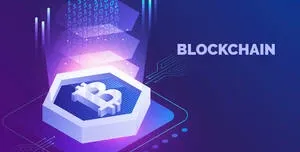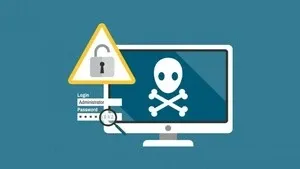This plan includes
- Limited free courses access
- Play & Pause Course Videos
- Video Recorded Lectures
- Learn on Mobile/PC/Tablet
- Quizzes and Real Projects
- Lifetime Course Certificate
- Email & Chat Support
What you'll learn?
- A thorough understanding about blockchain technology. Create blockchain applications and Smart Contracts using Solidity language in Ethereum platform
Course Overview
Hello and welcome to The Complete Practical Guide To Blockchain Application Development
If you are going to ask me which is the Information Technology Domain that is going to change the future, without any doubt I would surely say its block chain based decentralized applications and smart contracts.
Put simply, blockchain is a transaction ledger that maintains identical copies across each member computer within a network. The interesting feature is that, once an information is placed inside a block of the block chain, the tampering or changing of it is impossible.
Governments and financial organizations have already invested millions of dollars into blockchain research and development and most of them have already implemented blockchain in financial services and record keeping.
Also blockchain based smart contracts are replacing the conventional paper contracts and other promissory deeds. Smart contract is an electronic contract that can execute itself after the conditions mentioned in the contact is full-filled. Since its also based in blockchain, once created, it cannot be tampered by anyone.
If you are a technology enthusiast or a programmer who wish to integrate blockchain in your applications, this is the right time to get yourself a thorough knowledge about the practical implementation of blockchain.
There are tons of material and books out there explains, the concepts, nuts and bolts of block chain. But only a very few of them explains how it can be practically implemented.
In this course, I have taken extreme care to keep a 30 / 70 percentage balance between the theoretical concepts and the practical implementation respectively.
After this course, you will get a clear idea of how and where to implement block chain in your existing software projects as well as your upcoming project ideas.
Here is the overview of the list of topics that I have included in this course
Before we proceed with the intense practical sessions, we will have the first few secessions in which we discuss the history and the basic concepts of block chain distributed applications and smart contracts.
In Session 1, we will discuss the history of block chain and distributed applications. Also we will check the basic structure of a block. Which is the building block of the block chain, which is a chain of these blocks.
In session 2, we will understand with the help of demographics, how these blocks are linked to form a block chain and the major security measures in blockchain which makes it this much secure.
In session 3, we will have a small discussion about the types of networks and the concept of crypto currencies like bitcoin which is built based on blockchain technology
In session 4, we will have an overview of what is mean by smart contracts based on blockchain and its working. Also we will discuss the various fields of applications of block chain at present and in the future.
And once we have enough basics about the concepts, we will jump directly into our first practical blokchain workshop. In which, we will build a working model of a conceptual blockchain out of simple JavaScript and JavaScript runtime called nodejs. Don't worry if you have only basic JavaScript knowledge, I will explain things very clearly that even a novice can understand and follow.
In session 5, we will prepare our computer by installing and configuring node js and visual studio code which will help us in developing the JavaScript blockchain
In sessions 6 we will create the class for a single block, which we will be using to create the block chain.
And in session 7, we will create our first block in the chain called genesis block.
In session 8, We will and the functionality to add new blocks so that we can create rest of the blocks
In session 9, we will test the block addition mechanism in our in our JavaScript block chain
and in session 10, we will implement hash verification, which is the most important security measure inside our block chain.
In the next session 11, we will include an additional security measure called proof of work to prevent the quick tampering attempts of our JavaScript block chain.
In session 12, we will implement the concept of mining rewards for the minors who mines and validate new blocks for our JavaScript block chain.
And thats all with our simple JavaScript conceptual blockchain application and from the next session on wards we are going to get our hands dirty with some serious business using the actual ethereum block chain network. In the coming sessions, we will create an ethereum based blockchain and deploy our smart contract within the ethereum block chain network. For your information, ethereum is the worlds most popular open source public blockchain platform.
So in session 13, we will be getting our systems ready to build our ethereum block chain by downloading and installing the dependencies which include nodejs, ganache, metamask solidity language, the truffle framework and sublime text editor for coding.
In session 14, we will configure these dependencies and we will do a basic test to make sure everything is ready to proceed with the development.
we will start building our blockchain smart contract project out of solidity and ethereum. This project is a simple contest application, for finding out the best actor, with two contestants Tom and Jerry. We will have to build a block chain based app to find who is getting the maximum viewer support.
In the next session 15, we will create the model and class to use for every contestant in the project and we will include tom and Jerry as contestants and
In session 16, we will fetch the contestant list using web3js, which is the library use to interact with the blockchain.
Since smart contract can be created once and cannot be altered, the testing procedure should be done strictly before deploying it into the blockchain network. If any mistake or bug, the only option you will have is to remove the existing contract and deploy the new one instead, which is very time consuming and inconvenient. So In session 17, the block chain will be tested by using the truffle framework's testing environment by emulating the transaction of creating users.
Till now, all the block chain interaction happens over the node js command line interface and the truffle framework command line. Now its time to make it appear to our customers or on-line users in an attractive web based front end, using a web page. In order to proceed with that, we will create the html part of the front end application in session 18 and in session 19, we will include the JavaScript part of the simple and beautiful html page we created and we will list the contestants in our best actor contest to the public by running the lite-server which comes along with the truffle framework.
In session 20, in addition to the contestants listing functionality, we will add the voting functionality also to our blockchain smart contract.
Since the members and non members of the network may use the voting app, we need to thoroughly check for the conditions and rules we implemented in the smart contract. We will test the functionality till now using the truffle framework testing mechanism in session 21
In session 22, we will include rules and restrictions for our best actor contest. Rules like, a user can vote only once and the user cannot vote for any non existing contestants.
Till now the voting can only be done via a command line. In session 22, in our simple web interface, we will include the functionality to cast vote to any contestant from our web page.
And in the final session, we will create an event watch which will listen for the event of voting and once the voting done, it will refresh the page and fetch data from the blockchain network so that the winner of the contest can be known every then and there.
Even though these are sample projects, it will surely give enough insight to your mind about how the blockchain can be included into your web or mobile projects. This course will also give you enough knowledge to get yourself ahead of others in the blockchain race which have already started.
After successful completion of the course, we will provide you with a course completion certificate which will add much value to your career as a developer, software engineer or as a software architect.
So lets jump into the future of technology using blockchain. See you soon in the class room. Wishing you a happy learning.
Pre-requisites
- A Technology enthusiast with basic programming knowledge. A window, mac or linux computer.
Target Audience
- Beginner programmer or technology enthusiast who wish to learn about blockchain technology and implement it in projects
Curriculum 40 Lectures 04:56:00
Section 1 : Course Introduction & Topics Included
Section 2 : Theory Session 1: Introduction to Blockchain - History and Structure of Blocks
- Lecture 1 :
- Theory Session 1: Introduction to Blockchain - History and Structure of Blocks
Section 3 : Theory Session 2 - Blockchain Concept, Working and Security Mechanisms
- Lecture 1 :
- Theory Session 2 - Blockchain Concept, Working and Security Mechanisms
Section 4 : Theory Session 3: Different Types of Networks, Blockchains and Cryptocurrencies
- Lecture 1 :
- Theory Session 3: Different Types of Networks, Blockchains and Cryptocurrencies
Section 5 : Theory Session 4 - Smart Contracts and Future of Blockchain
- Lecture 1 :
- Theory Session 4 - Smart Contracts and Future of Blockchain
Section 6 : JavaScript & Nodejs based Conceptual Blockchain Implementation - System Setup
- Lecture 1 :
- JavaScript & Nodejs based Conceptual Blockchain Implementation - System Setup
Section 7 : JavaScript Blockchain - Create Block Class - Part 1
- Lecture 1 :
- JavaScript Blockchain - Create Block Class - Part 1
Section 8 : JavaScript Blockchain - Create Block Class - Part 2
- Lecture 1 :
- JavaScript Blockchain - Create Block Class - Part 2
Section 9 : JavaScript Blockchain - Create Genesis Block
- Lecture 1 :
- JavaScript Blockchain - Create Genesis Block
Section 10 : JavaScript Blockchain - Create Other Blocks
- Lecture 1 :
- JavaScript Blockchain - Create Other Blocks
Section 11 : JavaScript Blockchain - Testing Blocks Addition
- Lecture 1 :
- JavaScript Blockchain - Testing Blocks Addition
Section 12 : JavaScript Blockchain - Implementing Security - Hash Validation
- Lecture 1 :
- JavaScript Blockchain - Implementing Security - Hash Validation
Section 13 : JavaScript Blockchain-Implementing Security - Proof of Work : Part 1 - The Logic
- Lecture 1 :
- JavaScript Blockchain-Implementing Security - Proof of Work : Part 1 - The Logic
Section 14 : JavaScript Blockchain-Implementing Security - Proof of Work : Part 2 - Implement
- Lecture 1 :
- JavaScript Blockchain-Implementing Security - Proof of Work : Part 2 - Implement
Section 15 : JavaScript Blockchain-Transactions and Mining Rewards - Part1 - Building Logic
- Lecture 1 :
- JavaScript Blockchain-Transactions and Mining Rewards - Part1 - Building Logic
Section 16 : JavaScript Blockchain-Transactions and Mining Rewards - Part2 - Cryptocurrency
- Lecture 1 :
- JavaScript Blockchain-Transactions and Mining Rewards - Part2 - Cryptocurrency
Section 17 : JavaScript Blockchain-Transactions and Mining Rewards - Part3 - Cryptocurrency
- Lecture 1 :
- JavaScript Blockchain-Transactions and Mining Rewards - Part3 - Cryptocurrency
Section 18 : Ethereum & Solidity Based Blockchain Smart Contract Web App - System Setup
- Lecture 1 :
- Ethereum & Solidity Based Blockchain Smart Contract Web App - System Setup
Section 19 : Ethereum Blockchain - Best Actor Selection App . Build Contestant Class - Part 1
- Lecture 1 :
- Ethereum Blockchain - Best Actor Selection App . Build Contestant Class - Part 1
Section 20 : Ethereum Blockchain - Testing the Solidity Code Migration to Blockchain Network
- Lecture 1 :
- Ethereum Blockchain - Testing the Solidity Code Migration to Blockchain Network
Section 21 : Ethereum Blockchain - Creating Class & Accessing Contestant Class Data - Part 3
- Lecture 1 :
- Ethereum Blockchain - Creating Class & Accessing Contestant Class Data - Part 3
Section 22 : Ethereum Blockchain - Multiple Contestants Structure and Functions - Part 1
- Lecture 1 :
- Ethereum Blockchain - Multiple Contestants Structure and Functions - Part 1
Section 23 : Ethereum Blockchain - Add, List and Count Multiple Contestants , Deploy - Part 2
- Lecture 1 :
- Ethereum Blockchain - Add, List and Count Multiple Contestants , Deploy - Part 2
Section 24 : Ethereum Blockchain - Fetch Contestant Attributes, get accounts using web3js
- Lecture 1 :
- Ethereum Blockchain - Fetch Contestant Attributes, get accounts using web3js
Section 25 : Ethereum Blockchain - Logic Test 1 - Prior to Smart Contract Deployment
- Lecture 1 :
- Ethereum Blockchain - Logic Test 1 - Prior to Smart Contract Deployment
Section 26 : Ethereum Blockchain - Listing Contestants - Building the front-end HTML page
- Lecture 1 :
- Ethereum Blockchain - Listing Contestants - Building the front-end HTML page
Section 27 : Ethereum Blockchain - Listing Contestants - Building the JavaScript Code - Part1
- Lecture 1 :
- Ethereum Blockchain - Listing Contestants - Building the JavaScript Code - Part1
Section 28 : Ethereum Blockchain - Listing Contestants - Building the JavaScript Code - Part2
- Lecture 1 :
- Ethereum Blockchain - Listing Contestants - Building the JavaScript Code - Part2
Section 29 : Ethereum Blockchain - Listing Contestants - Build the UI Render Function - Part3
- Lecture 1 :
- Ethereum Blockchain - Listing Contestants - Build the UI Render Function - Part3
Section 30 : Ethereum Blockchain - Listing Contestants - Testing the Web UI - Part 4
- Lecture 1 :
- Ethereum Blockchain - Listing Contestants - Testing the Web UI - Part 4
Section 31 : Ethereum Blockchain - Build, Implement and Test the Voting Mechanism
- Lecture 1 :
- Ethereum Blockchain - Build, Implement and Test the Voting Mechanism
Section 32 : Ethereum Blockchain - Testing Voting using Truffle Built-in Testing Environment
- Lecture 1 :
- Ethereum Blockchain - Testing Voting using Truffle Built-in Testing Environment
Section 33 : Ethereum Blockchain - Adding Validation and Restrictions to Voting functionality
- Lecture 1 :
- Ethereum Blockchain - Adding Validation and Restrictions to Voting functionality
Section 34 : Ethereum Blockchain - Adding Voting Function to Web UI - Part 1
- Lecture 1 :
- Ethereum Blockchain - Adding Voting Function to Web UI - Part 1
Section 35 : Ethereum Blockchain - Adding Voting Function to Web UI - Part 2
- Lecture 1 :
- Ethereum Blockchain - Adding Voting Function to Web UI - Part 2
Section 36 : Ethereum Blockchain - Adding Event Watcher to Voting Functionality
- Lecture 1 :
- Ethereum Blockchain - Adding Event Watcher to Voting Functionality
Section 37 : Ethereum Blockchain -STEPS - TROUBLESHOOTING WEB UI
- Lecture 1 :
- Troubleshoot web UI - Data not appearing
Section 38 : SOURCE CODE ATTACHED
- Lecture 1 :
- SOLIDITY 4.X SOURCE CODE ATTACHED
- Lecture 2 :
- JS SOURCE CODE ATTACHED
- Lecture 3 :
- SOLIDITY 5.X SOURCE CODE ATTACHED
Our learners work at
Frequently Asked Questions
How do i access the course after purchase?
It's simple. When you sign up, you'll immediately have unlimited viewing of thousands of expert courses, paths to guide your learning, tools to measure your skills and hands-on resources like exercise files. There’s no limit on what you can learn and you can cancel at any time.Are these video based online self-learning courses?
Yes. All of the courses comes with online video based lectures created by certified instructors. Instructors have crafted these courses with a blend of high quality interactive videos, lectures, quizzes & real world projects to give you an indepth knowledge about the topic.Can i play & pause the course as per my convenience?
Yes absolutely & thats one of the advantage of self-paced courses. You can anytime pause or resume the course & come back & forth from one lecture to another lecture, play the videos mulitple times & so on.How do i contact the instructor for any doubts or questions?
Most of these courses have general questions & answers already covered within the course lectures. However, if you need any further help from the instructor, you can use the inbuilt Chat with Instructor option to send a message to an instructor & they will reply you within 24 hours. You can ask as many questions as you want.Do i need a pc to access the course or can i do it on mobile & tablet as well?
Brilliant question? Isn't it? You can access the courses on any device like PC, Mobile, Tablet & even on a smart tv. For mobile & a tablet you can download the Learnfly android or an iOS app. If mobile app is not available in your country, you can access the course directly by visting our website, its fully mobile friendly.Do i get any certificate for the courses?
Yes. Once you complete any course on our platform along with provided assessments by the instructor, you will be eligble to get certificate of course completion.
For how long can i access my course on the platform?
You require an active subscription to access courses on our platform. If your subscription is active, you can access any course on our platform with no restrictions.Is there any free trial?
Currently, we do not offer any free trial.Can i cancel anytime?
Yes, you can cancel your subscription at any time. Your subscription will auto-renew until you cancel, but why would you want to?
Instructor

286628 Course Views
19 Courses



 Tech & IT
Tech & IT
 Business
Business
 Coding & Developer
Coding & Developer
 Finance & Accounting
Finance & Accounting
 Academics
Academics
 Office Applications
Office Applications
 Art & Design
Art & Design
 Marketing
Marketing
 Health & Wellness
Health & Wellness
 Sounds & Music
Sounds & Music
 Lifestyle
Lifestyle
 Photography
Photography


























